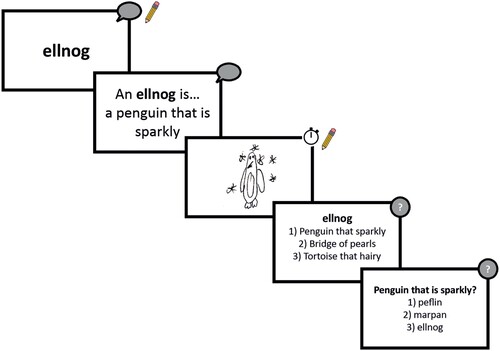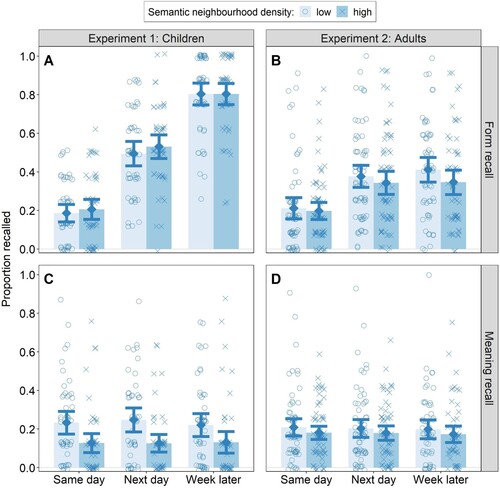Figures & data
Table 1. Properties of stimuli in the low and high semantic neighbourhood density conditions.
Figure 1. Schematic of the training tasks used in the learning phase.
Note: For each item, children first repeated the new word aloud twice and wrote it down, before repeating the definition twice. They were given 30 s to draw a picture of the new concept. After completing these learning tasks for all items, children completed two rounds of multiple choice quizzes.

Figure 2. Explicit recall performance by semantic neighbourhood condition and test session.
Note: Proportion correct for (A) Form recall in Experiment 1; (B) Form recall in Experiment 2; (C) Meaning recall in Experiment 1; and (D) Meaning recall in Experiment 2. Individual points mark average participant recall for each condition for each test session. Error bars denote 95% confidence intervals.

Table 2. Final analysis models for Experiment 1: Form tasks.
Table 3. Final analysis model for Experiment 1: Cued meaning recall.
Table 4. Final analysis models for Experiment 2: Form tasks.
Table 5. Final analysis model for Experiment 2: Cued meaning recall.
Supplemental Appendix
Download MS Word (24.6 KB)Data availability statement
All materials, data, and analyses are available at https://osf.io/35ftn/.
